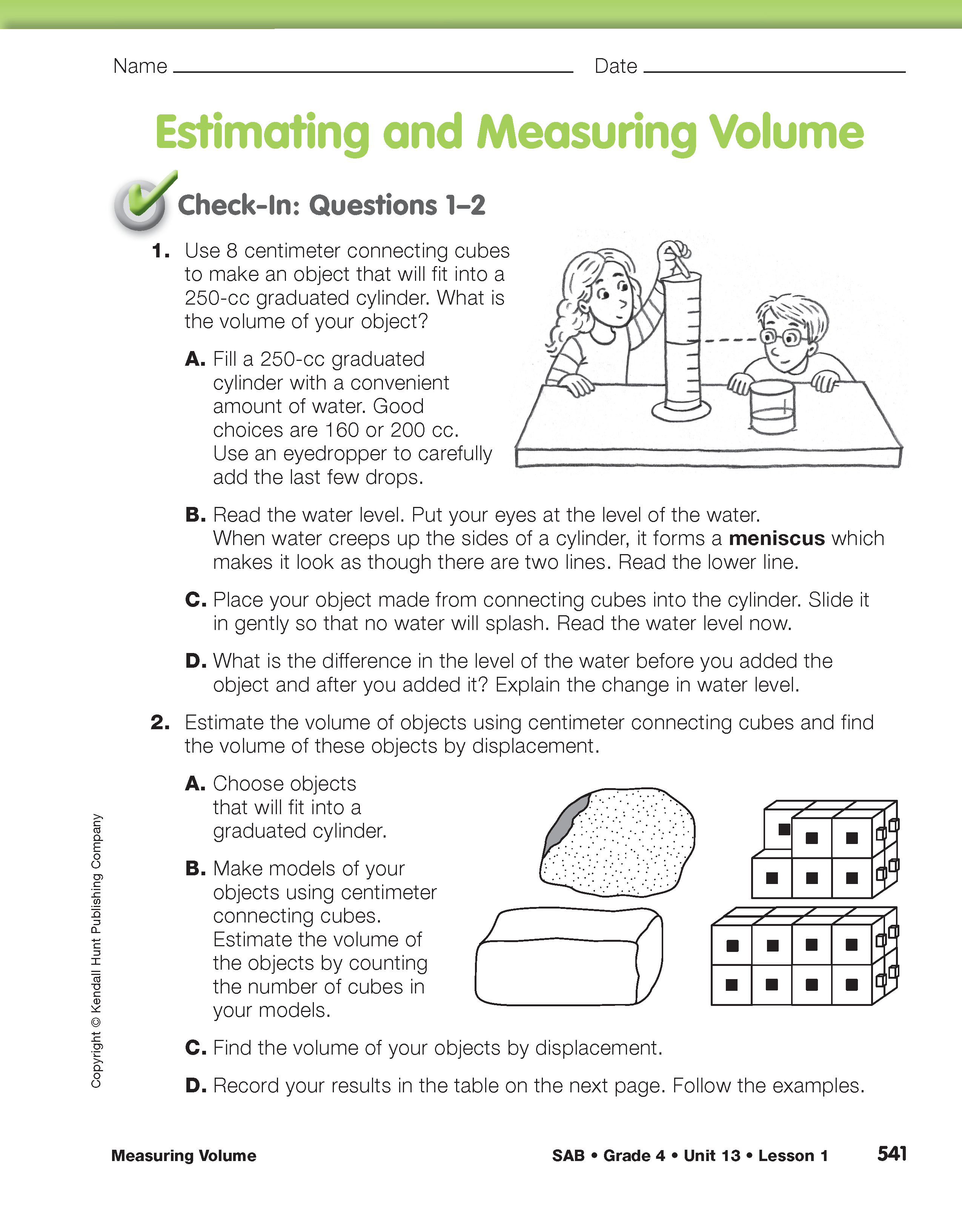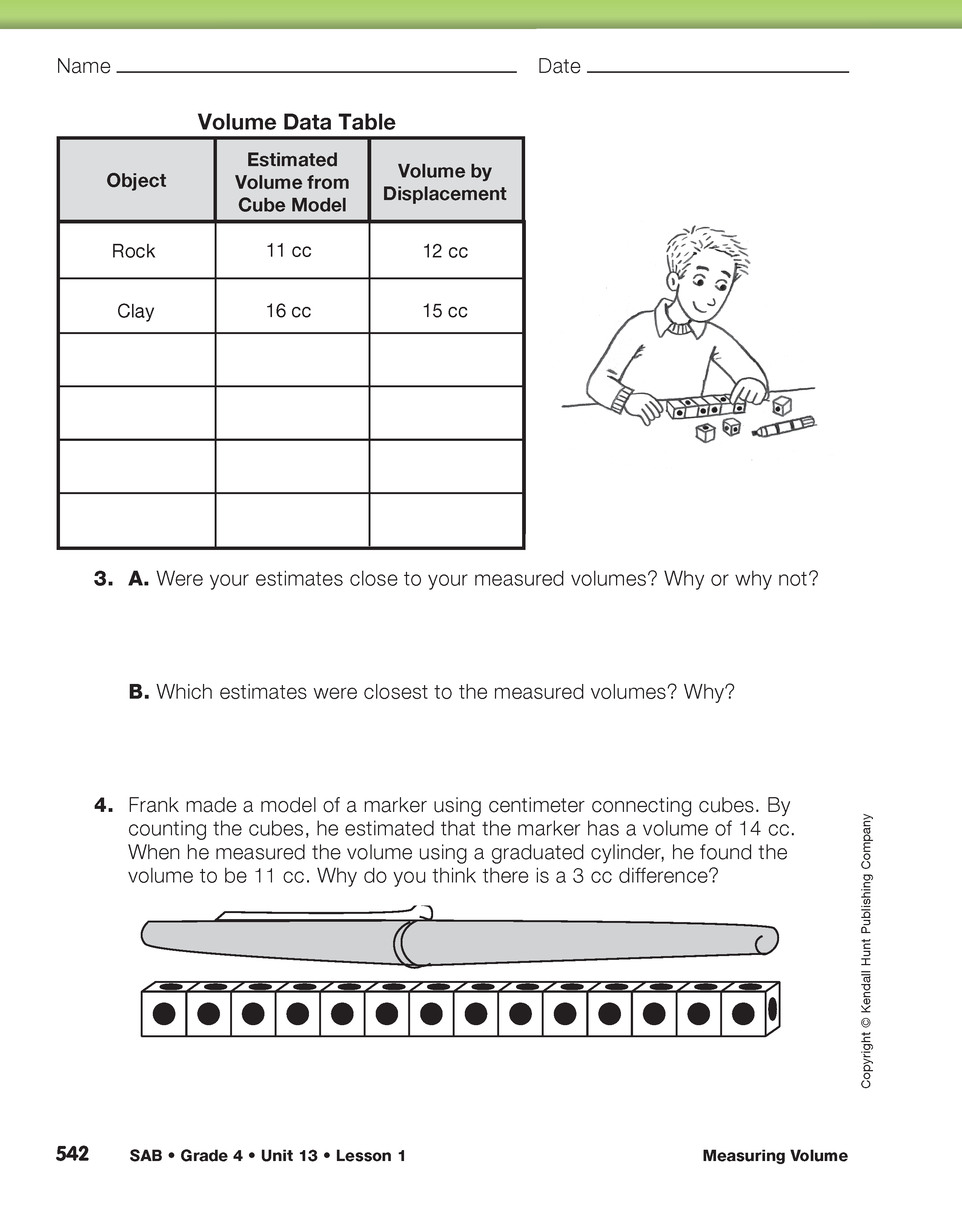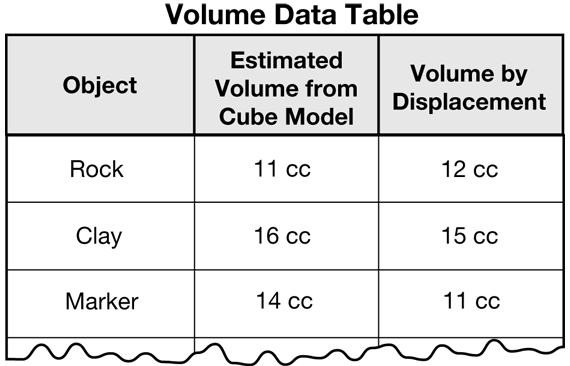Organize students in pairs and ask them to refer to the Estimating and Measuring Volume pages in the Student Activity Book. Distribute materials organized before the lesson. Working and discussing in pairs, students practice estimating the volume of objects using cube models, finding volume by displacement, and comparing estimates to actual measurements.
Question 1 asks students to use eight centimeter connecting cubes to build an object that will fit into a graduated cylinder. Each student should understand that the volume of the object is 8 cc. Then students find the volume of their cubes using a graduated cylinder so they can see the connection between measuring volume by counting cubes and measuring volume by displacement.
In Question 2, students estimate volume by building models of objects with centimeter connecting cubes and measure the volume of the actual objects by displacement. They enter both their estimates and measurements in a table as shown in Figure 2.

Milliliters vs. Cubic Centimeters. When we measure objects in Math Trailblazers, we often use the cubic centimeter (cc) as our basic unit for measuring volume. As the name implies, a cubic centimeter is a cube that has a side length of 1 cm. An object that has a volume of 150 cc takes up the same amount of space as 150 centimeter cubes. When measuring liquid volume using the metric system, the liter is often used as the unit of measure. A cube that is 10 cm on each side has a volume of one liter. Since 10 cm × 10 cm × 10 cm (length × width × height) is 1000 cc, a liter is the same size as 1000 cc. It is also true that 1/1000 of a liter, a milliliter (ml), has the same volume as 1 cubic centimeter. Since cubic centimeters and milliliters have the same volume, they are often used interchangeably. We have chosen to generally use cubic centimeters instead of milliliters because we believe the image of a cubic centimeter is conceptually easier for young students to visualize than 1/1000 of a liter. Either unit of measure, however, is correct. Some of the questions in the activities in this unit emphasize the equivalence of these two units of measure.

Use Check-In: Questions 1–2 on the Estimating and Measuring Volume pages in the Student Activity Book to assess students' abilities to estimate volume [E7] and measure volume by displacement to the nearest cubic centimeter [E6].
The Fill It First game in Lesson 2 can be used as targeted practice.
There will be additional opportunities in Lessons 2 and 3 to assess students' abilities to measure volume by displacement. Choose one-third of the students to assess in each lesson.
In Question 3, students compare their estimates to the measured volumes. If students find large discrepancies between their estimates and the measured volume, they may need to rebuild their cube models in order to see the connection between the number of centimeter connecting cubes and volume of water displaced by the actual object.
Assign the Homework section in the Student Activity Book.

















